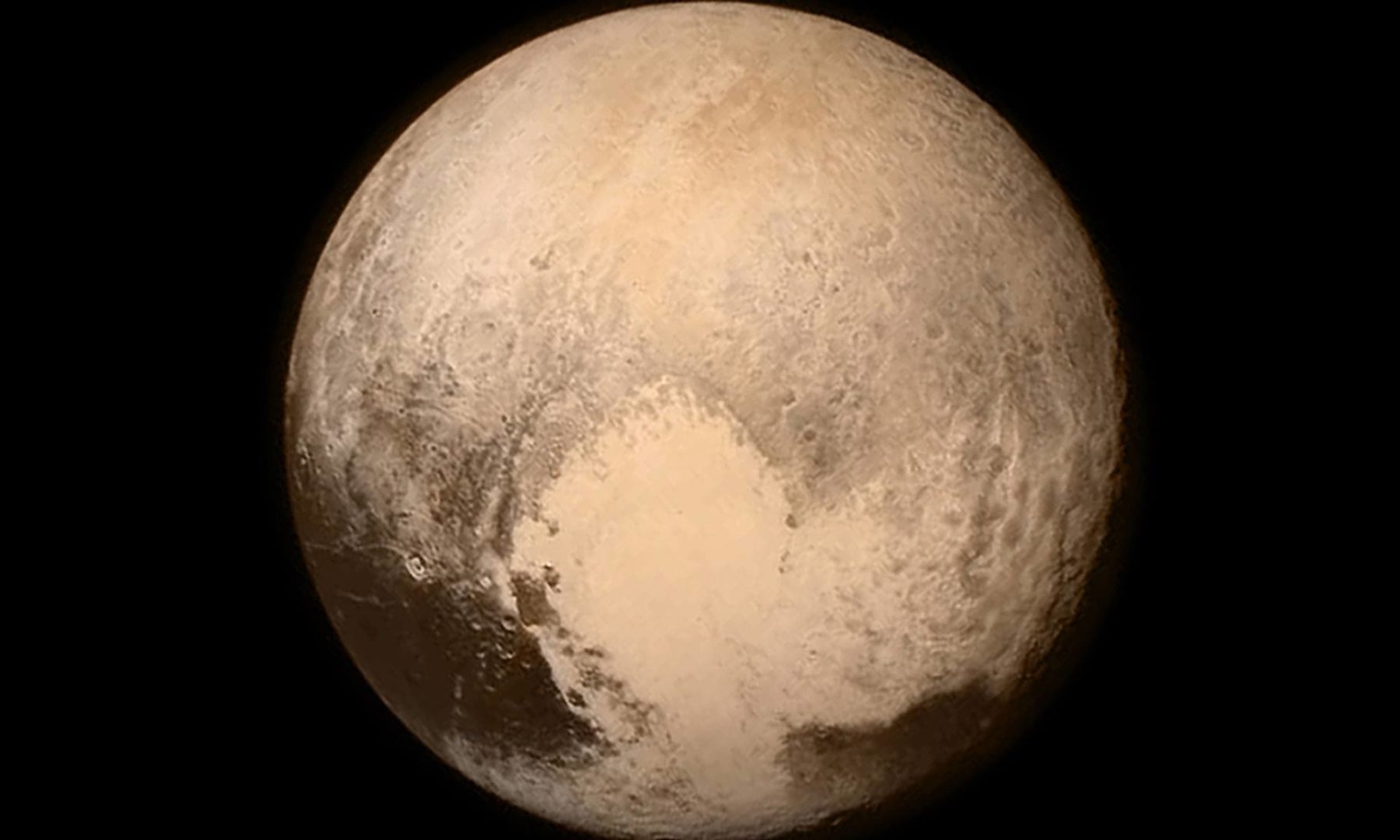[dropcap size=small]N[/dropcap]ASA literally took humanity’s reach to New Horizons. [highlight ]It launched an interplanetary space probe 9 and half years ago, known as New Horizon, whose soul purpose was to study Pluto (also its moons and Kuiper Belt) in a window of minutes.[/highlight] The initiative was called as New Frontier’s Program conceived by Johns Hopkins University Applied Physics Laboratory (APL) and the Southwest Research Institute (SwRI). Imagine the fastest probe ever travelling with a speed far greater than a bullet (36,000 miles per hour), 5 billions miles away from home for just a fly-by event of 3-5 minutes, then try to imagine the hard work of the brilliant minds which undertook this mission.
The fascinating thing is precision, I mean how could a bunch of scientists and researchers sitting on Earth could possibly predict and operate the appropriate momentum, speed, displacement, position and timing of the probe. What could have happened if Pluto didn’t intersect the path of New horizon while revolving around the sun, or what would’ve happened if Pluto was in the dark and no pictures could have been taken in the fly by. This indicates the amount of genius involved in the project.
[divider]Facts about the Probe[/divider]
1. The probe makes use of Radioisotope thermal generator (using Plutonium) to generate energy, as it’s billions of miles away from the sun, making it incapable of using solar energy.
2. In order to counter damages, New Horizon has spent much of its time in hibernation, with periodic checks to make sure if the instruments and systems were working properly.
3. It caries instruments like:
*Alice, an ultraviolet imaging spectrometer which will analyse the atmosphere of Pluto and it’s moons.
*Ralph, used for providing thermal maps of the dwarf planet.
*LORRI (LOng Range Reconnaissance Imager), powerful telescopic camera capable of obtaining images and data from really great distances.
*PEPSSI (Pluto Energetic Particle Spectrometer Science Investigation), measures density of ions escaping from Pluto.
*REX (Radio Science Experiment), measures atmospheric composition and temperature.
*SWAP (Solar Wind Around Pluto), measures atmosphere escaping Pluto.
4. It also contains various artifacts like U. S. A. flags, ashes of Clyde Tombaugh who discovered Pluto in 1930, a 1991 stamp that says “Pluto: Not Yet Explored”, CD-ROMs with the names of 434,000 people who signed up for the mission.
5. Its journey to Pluto is equivalent to 32 trips to sun.
6. Its mission will carry on even after passing Pluto, to explore Kuiper Belt. The mission will officially end in 2026.
7. Pluto has almost 5 moons, and chances are New Horizon might collide with one of them.
8. It also captured a volcanic eruption on Jupiter’s moon.
https://www.youtube.com/watch?v=MqVTT9jKULA
9. It managed to get a speed boost of 9,000 mph on its original speed by utilizing the gravity of Jupiter as a slingshot .
10 Its size is close to a grand Piano.
[divider]How the New Horizon mission works?[/divider]
1. Like I mentioned above, Ralph will transmit medium resolution coloured images and LOORI will transmit high resolution Black and white, also known as Gray scale images.
2. The probe has a small antenna, which isn’t always pointing towards Earth. When the probe collects the data, it has to reorient itself towards Earth to transmit the data back home.
3. There ‘s a COMP (Compostion) team which will monitor readings from infrared mapping spectrometer.
4. There’s an ATM (Atmosphere) team which will examine atmospheric conditions of Pluto like Density and Structure, Chemical quotient, winds and surface pressure.
5. There’s a P&P (Particles and Plasma) team which will study the interaction of Solar winds with gases coming from Pluto and its moons.
6. The radio waves from the Probe to Earth take 4.5 Hours to reach, and the download rate is 1 Kbit /sec.
7. To save fuel, the probe won’t stop.
[divider]Facts about Pluto[/divider]
There are still months left to get the complete set of data back. Until then, here are few of them which are disclosed:
1. It has a mass of 13,050,000,000,000 billion kg which is 0.00218 part of Earth (suppose, if earth is a basket ball, then Pluto is a golf Ball).
2. Pluto isn’t considered a planet; it’s referred to as a dwarf planet because it doesn’t exhibits all the propertie which define a planet, and there are a lot of dwarf planets similar to Pluto yet to be discovered in Kuiper Belt .
3. It has 5 known moons: Charon, Nix, Hydra, Kerberos and Styx.
4. It has an orbital distance of about 5,874,000,000 km (39.26 AU).
5. An orbit period of 246.04 Earth years, which means Pluto takes 246 years to revolve around the sun.
6. It has a temperature of about -229°C.
7. Its one-third is water which is 3 times more than Earth’s oceans. Water is in form of ice, remaining part is rock.
8. In its elliptical orbit when its closer to sun, some part of the ice exhibiting in the planet recedes and creates an atmosphere of Nitrogen with little presence of Methane and Carbon Monoxide within.
9. A person will weigh 1/15 of his weight (weight on Earth) on Pluto.
10. Unlike Earth, It rotates on its sides like Uranus.
11. Pluto’s atmospheric surface pressure is almost 100,000 times less than Earth.
[alert type=red ]Space is the final frontier and the war for its exploration still rages on. We don’t know how far we need to go to finally find what we are always looking for – answers, but we beyond any doubt know that we will get there in due time[/alert]
